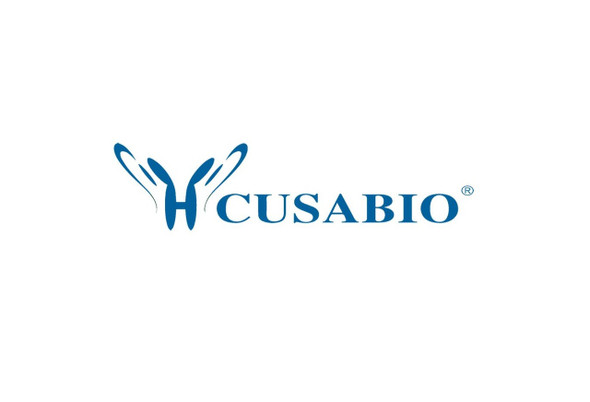Cusabio Human Recombinants
Recombinant Human Death domain-associated protein 6 (DAXX), partial | CSB-RP012444h
- SKU:
- CSB-RP012444h
- Availability:
- 13 - 23 Working Days
Description
Recombinant Human Death domain-associated protein 6 (DAXX), partial | CSB-RP012444h | Cusabio
Alternative Name(s): Daxx ;hDaxxETS1-associated protein 1 ;EAP1Fas death domain-associated protein
Gene Names: DAXX
Research Areas: Apoptosis
Organism: Homo sapiens (Human)
AA Sequence: MATANSIIVLDDDDEDEAAAQPGPSHPLPNAASPGAEAPSSSEPHGARGSSSSGGKKCYKLENEKLFEEFLELCKMQTADHPEVVPFLYNRQQRAHSLFLASAEFCNILSRVLSRARSRPAKLYVYINELCTVLKAHSAKKKLNLAPAATTSNEPSGNNPPTHLSLDPTNAENTASQSPRTRGSRRQIQRLEQLLALYVAEIRRLQEKELDLSELDDPDSAYLQEARLKRKLI
Source: E.coli
Tag Info: N-terminal GST-tagged
Expression Region: 1-233aa
Sequence Info: Partial
MW: 52.7 kDa
Purity: Greater than 90% as determined by SDS-PAGE.
Relevance: Transcription corepressor known to repress transcriptional potential of several sumoylated transcription factors. Down-regulates basal and activated transcription. Its transcription repressor activity is modulated by recruiting it to subnuclear compartments like the nucleolus or PML/POD/ND10 nuclear bodies through interactions with MCSR1 and PML, respectively. Ses to regulate transcription in PML/POD/ND10 nuclear bodies together with PML and may influence TNFRSF6-dependent apoptosis thereby. Inhibits transcriptional activatiopn of PAX3 and ETS1 through direct protein-protein interactions. Modulates PAX5 activity; the function ses to involve CREBBP. Acts as an adapter protein in a MDM2-DAXX-USP7 complex by regulating the RING-finger E3 ligase MDM2 ubiquitination activity. Under non-stress condition, in association with the deubiquitinating USP7, prevents MDM2 self-ubiquitination and enhances the intrinsic E3 ligase activity of MDM2 towards TP53, thereby promoting TP53 ubiquitination and subsequent proteasomal degradation. Upon DNA damage, its association with MDM2 and USP7 is disrupted, resulting in increased MDM2 autoubiquitination and consequently, MDM2 degradation, which leads to TP53 stabilization. Acts as histone chaperone that facilitates deposition of histone H3.3. Acts as targeting component of the chromatin rodeling complex ATRX:DAXX which has ATP-dependent DNA translocase activity and catalyzes the replication-independent deposition of histone H3.3 in pericentric DNA repeats outside S-phase and telomeres, and the in vitro rodeling of H3.3-containing nucleosomes. Does not affect the ATPase activity of ATRX but alleviates its transcription repression activity. Upopn neuronal activation asociates with regulatory elents of selected immediate early genes where it promotes deposition of histone H3.3 which may be linked to transcriptional induction of these genes. Required for the recruitment of histone H3.3:H4 dimers to PML-nuclear bodies (PML-NBs); the process is independent of ATRX and facilitated by ASF1A; PML-NBs are suggested to function as regulatory sites for the incorporation of newly synthesized histone H3.3 into chromatin. In case of overexpression of centromeric histone variant CENPA (as found in various tumors) is involved in its mislocalization to chromosomes; the ectopic localization involves a heterotypic tetramer containing CENPA, and histones H3.3 and H4 and decreases binding of CTCF to chromatin. Proposed to mediate activation of the JNK pathway and apoptosis via MAP3K5 in response to signaling from TNFRSF6 and TGFBR2. Interaction with HSPB1/HSP27 may prevent interaction with TNFRSF6 and MAP3K5 and block DAXX-mediated apoptosis. In contrast, in lymphoid cells JNC activation and TNFRSF6-mediated apoptosis may not involve DAXX. Shows restriction activity towards human cytomegalovirus (HCMV)
Reference: Daxx, a novel Fas-binding protein that activates JNK and apoptosis.Yang X., Khosravi-Far R., Chang H.Y., Baltimore D.Cell 89:1067-1076(1997)
Storage: The shelf life is related to many factors, storage state, buffer ingredients, storage temperature and the stability of the protein itself. Generally, the shelf life of liquid form is 6 months at -20?/-80?. The shelf life of lyophilized form is 12 months at -20?/-80?.
Notes: Repeated freezing and thawing is not recommended. Store working aliquots at 4? for up to one week.
Function: Transcription corepressor known to repress transcriptional potential of several sumoylated transcription factors. Down-regulates basal and activated transcription. Its transcription repressor activity is modulated by recruiting it to subnuclear compartments like the nucleolus or PML/POD/ND10 nuclear bodies through interactions with MCSR1 and PML, respectively. Seems to regulate transcription in PML/POD/ND10 nuclear bodies together with PML and may influence TNFRSF6-dependent apoptosis thereby. Inhibits transcriptional activation of PAX3 and ETS1 through direct protein-protein interactions. Modulates PAX5 activity; the function seems to involve CREBBP. Acts as an adapter protein in a MDM2-DAXX-USP7 complex by regulating the RING-finger E3 ligase MDM2 ubiquitination activity. Under non-stress condition, in association with the deubiquitinating USP7, prevents MDM2 self-ubiquitination and enhances the intrinsic E3 ligase activity of MDM2 towards TP53, thereby promoting TP53 ubiquitination and subsequent proteasomal degradation. Upon DNA damage, its association with MDM2 and USP7 is disrupted, resulting in increased MDM2 autoubiquitination and consequently, MDM2 degradation, which leads to TP53 stabilization. Acts as histone chaperone that facilitates deposition of histone H3.3. Acts as targeting component of the chromatin remodeling complex ATRX
Involvement in disease:
Subcellular Location: Cytoplasm, Nucleus, nucleoplasm, Nucleus, PML body, Nucleus, nucleolus, Chromosome, centromere, Note=Dispersed throughout the nucleoplasm, in PML/POD/ND10 nuclear bodies, and in nucleoli (Probable), Colocalizes with histone H33, ATRX, HIRA and ASF1A at PML-nuclear bodies (PubMed:12953102, PubMed:14990586, PubMed:23222847, PubMed:24200965), Colocalizes with a subset of interphase centromeres, but is absent from mitotic centromeres (PubMed:9645950), Detected in cytoplasmic punctate structures (PubMed:11842083), Translocates from the nucleus to the cytoplasm upon glucose deprivation or oxidative stress (PubMed:12968034), Colocalizes with RASSF1 in the nucleus (PubMed:18566590), Colocalizes with USP7 in nucleoplasma with accumulation in speckled structures (PubMed:16845383), SUBCELLULAR LOCATION: Isoform beta: Nucleus, Note=Diffuse nuclear distribution pattern and no comparable dot-like accumulation of isoform 1, SUBCELLULAR LOCATION: Isoform gamma: Nucleus
Protein Families: DAXX family
Tissue Specificity: Ubiquitous.
Paythway: MAPKsignalingpathway
Form: Liquid or Lyophilized powder
Buffer: If the delivery form is liquid, the default storage buffer is Tris/PBS-based buffer, 5%-50% glycerol. If the delivery form is lyophilized powder, the buffer before lyophilization is Tris/PBS-based buffer, 6% Trehalose, pH 8.0.
Reconstitution: We recommend that this vial be briefly centrifuged prior to opening to bring the contents to the bottom. Please reconstitute protein in deionized sterile water to a concentration of 0.1-1.0 mg/mL.We recommend to add 5-50% of glycerol (final concentration) and aliquot for long-term storage at -20?/-80?. Our default final concentration of glycerol is 50%. Customers could use it as reference.
Uniprot ID: Q9UER7
HGNC Database Link: HGNC
UniGene Database Link: UniGene
KEGG Database Link: KEGG
STRING Database Link: STRING
OMIM Database Link: OMIM









